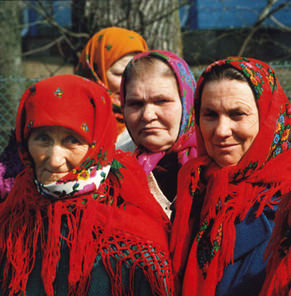Dernières publications
Science and Values in ICRP Publication 111: Experience from Fukushima
- Détails
- Catégorie : Communications
- Publication : lundi 4 mars 2013 16:30
LOCHARD J.
The system of radiological protection progressively developed over the past decades is a combination of scientific knowledge, ethical and social values and experience with the daily implementation of protection actions in all relevant domains. The guidance for the protection of people living in long term contaminated areas resulting from a nuclear
Oral presentation at the International Academic Conference on Radiation Health Risk Management in Fukushima, Fukushima, Japan, 25-27 February 2013.
Abstract
The system of radiological protection progressively developed over the past decades is a combination of scientific knowledge, ethical and social values and experience with the daily implementation of protection actions in all relevant domains. The guidance for the protection of people living in long term contaminated areas resulting from a nuclear accident published in 2009 by the Commission (ICRP Publication 111), are no exception to this approach. Based on the consolidated dose criteria recommended by the Commission in Publication 103 they largely take into account the Chernobyl experience and particularly its human dimension. The central role given to the involvement of stakeholders in all phases of the rehabilitation process is a key feature of the protection strategies recommended in Publication 111 to restore respectable lifestyles and livelihoods in the affected areas.
Following a review of the general framework of the ICRP Recommendations for controlling exposures during the emergency and the recovery phases of a nuclear accident, the presentation examines in greater details the advice of Publication 111 concerning :
- the criteria involved in the decision of public authorities concerning the transition from the emergency exposure situation to the existing exposure situation,
- the involvement and empowerment of the local professionals and affected population to respond to the challenges of living in a contaminated territory,
- the implementation of self help protection actions and practical radiation protection culture to complement the protection strategy of the authorities,
- the cooperation and solidarity between producers, distributers and consumers to manage contaminated foodstuffs and commodities.
This examination is made in the light of the first elements of feedback experience of the Fukushima Daiichi accident as they can be interpreted two years after.
A1171

 Le Centre d’étude sur l’Évaluation de la Protection dans le domaine Nucléaire (CEPN) est une association à but non lucratif, fondée en 1976, pour évaluer la protection de l’Homme contre les dangers des rayonnements ionisants, sous ses aspects techniques, sanitaires, économiques et sociaux.
Le Centre d’étude sur l’Évaluation de la Protection dans le domaine Nucléaire (CEPN) est une association à but non lucratif, fondée en 1976, pour évaluer la protection de l’Homme contre les dangers des rayonnements ionisants, sous ses aspects techniques, sanitaires, économiques et sociaux.
